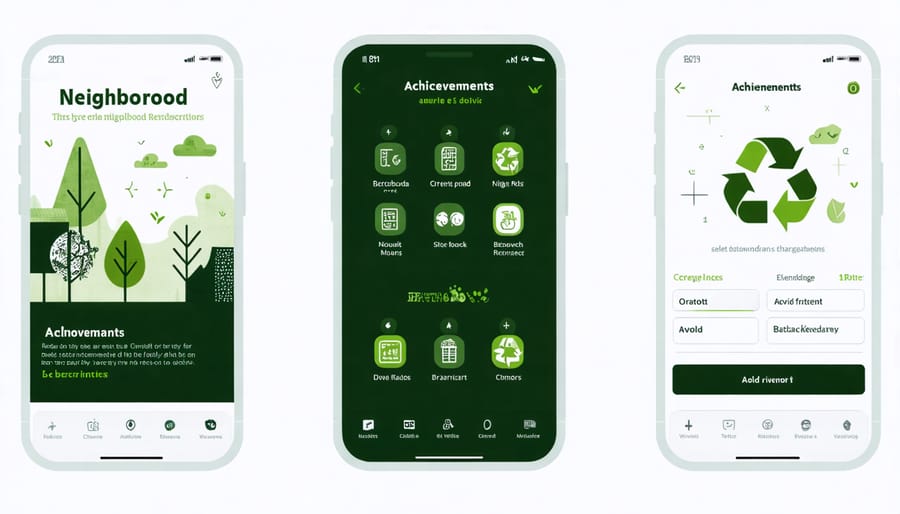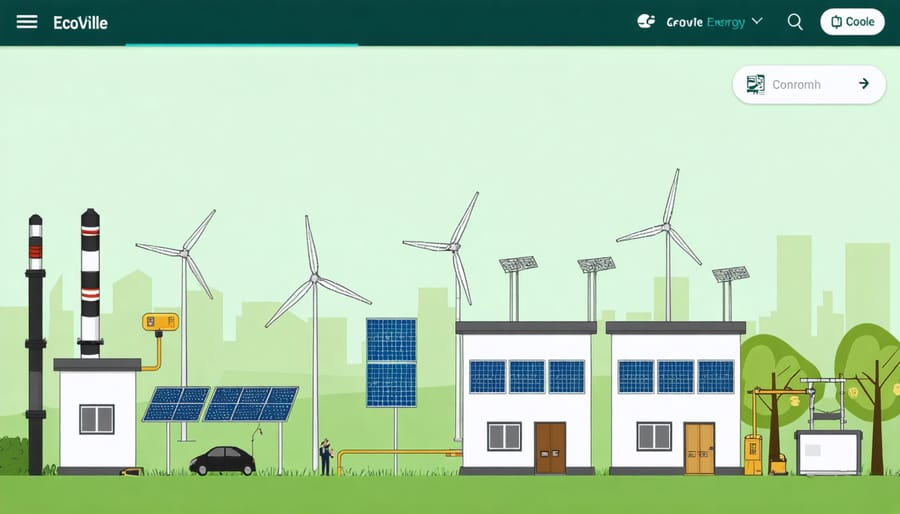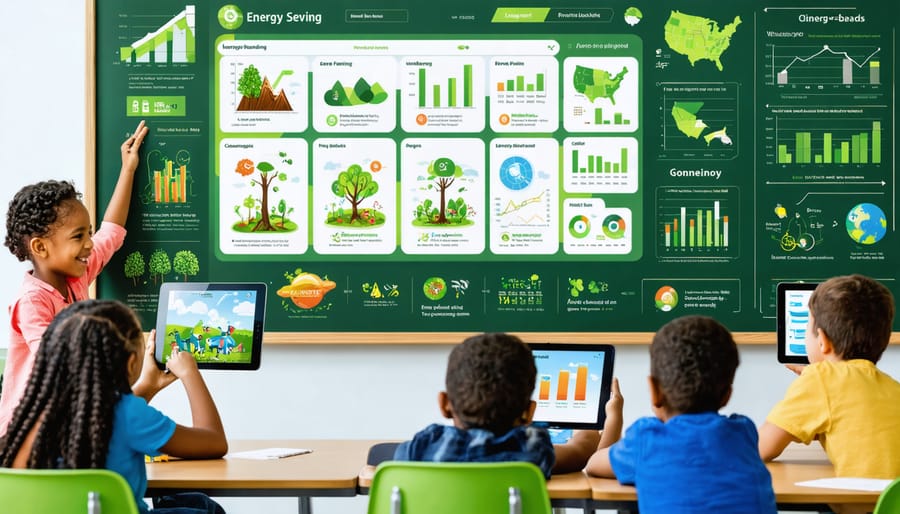Transform traditional classrooms into dynamic learning environments through gamification in education, where students become active participants in their educational journey rather than passive observers. Leading schools worldwide have reported up to 40% higher engagement rates and 25% better knowledge retention when implementing game-based learning strategies.
From Minecraft-based history lessons recreating ancient civilizations to mathematics competitions using virtual currency systems, innovative educators are revolutionizing how students interact with course material. Digital badges, leader boards, and achievement systems now turn everyday learning objectives into exciting quests that motivate students to excel.
The power of gamification lies in its ability to tap into fundamental human motivations – the desire for achievement, competition, and recognition. Whether it’s elementary students earning points for reading comprehension or university students navigating virtual labs, game mechanics create a framework where failure becomes a stepping stone to mastery rather than a source of discouragement.
This transformative approach to education isn’t just a trend – it’s becoming a cornerstone of modern pedagogy, backed by cognitive science and proven results across diverse learning environments. As technology continues to evolve, the possibilities for engaging, game-based learning experiences are limitless.
Classroom Sustainability Challenges That Actually Work
The Energy Conservation League
The Energy Conservation League stands as a shining example of how gamification can drive real environmental change in schools. This innovative program, first launched in Melbourne, transforms energy conservation into an engaging competition where schools compete to reduce their electricity consumption through a points-based system.
Participating schools install smart meters that track their daily energy usage, with students earning points for every kilowatt-hour saved compared to their baseline consumption. The genius of this system lies in its multi-layered approach to engagement. Students form “Energy Teams” that conduct regular energy audits, create conservation strategies, and implement awareness campaigns within their school communities.
The competitive element proves particularly effective, with schools displaying their progress on digital leaderboards in common areas. Monthly challenges add excitement, such as “No-Power Fridays” or “Solar Sprint” weeks, where schools aim for maximum renewable energy usage. Students earn bonus points for creative conservation initiatives, like organizing “switch-off monitors” or designing energy-saving posters.
Results have been remarkable, with participating schools reducing their energy consumption by an average of 25% in the first year. Beyond the immediate environmental impact, the program cultivates lasting behavioral changes. Students report carrying these energy-conscious habits home, creating a ripple effect throughout their communities. The success has led to the program’s expansion across other Australian states, demonstrating how gamification can effectively promote sustainable practices in education.

Farm-to-Table Adventure
The Farm-to-Table Adventure brings sustainable agriculture education to life through an engaging virtual farming simulation. Students become virtual farmers, making real-time decisions about crop selection, resource management, and sustainable farming practices while navigating seasonal challenges and market dynamics.
Players start with a small plot of virtual land where they learn to manage soil health, water resources, and pest control using natural methods. The game progressively introduces more complex concepts, such as crop rotation, companion planting, and organic certification requirements. Each successful harvest earns points and unlocks new farming techniques and equipment.
What makes this program particularly effective is its connection to real-world outcomes. Students can track their farm’s environmental impact through intuitive metrics, showing how their choices affect biodiversity, water conservation, and carbon footprint. The marketplace feature teaches economic sustainability, allowing players to sell their produce and reinvest in farm improvements.
The social component enables students to collaborate with classmates, share farming tips, and participate in community challenges. Regular updates introduce seasonal events and region-specific farming scenarios, keeping the content fresh and relevant to Australian agriculture. Success stories from actual farmers are integrated into the gameplay, providing authentic context and inspiration for budding agriculturalists.
Community-Based Green Initiatives Through Gaming

Neighborhood Eco-Champions
The “Neighborhood Eco-Champions” program demonstrates how gamification can transform ordinary household recycling initiatives into an engaging community competition. Participating neighborhoods track their waste reduction and recycling efforts through a user-friendly mobile app, earning points for activities like proper waste sorting, composting, and reducing overall bin weight.
Residents can form teams within their streets, competing against other local groups while working towards shared sustainability goals. The app features a real-time leaderboard, achievement badges, and monthly challenges that keep participants motivated. Special “power-up” weeks offer bonus points for specific actions, such as organizing community clean-up events or achieving zero waste days.
What makes this program particularly effective is its social component. Neighbors share tips and strategies through the app’s community forum, creating a supportive network of eco-conscious residents. Monthly “Green Street” awards recognize top-performing streets, with winning teams receiving sustainable prizes like community garden supplies or solar-powered lighting for their street.
The results speak for themselves: participating neighborhoods have reported up to 40% reduction in landfill waste and a 60% increase in correct recycling practices. The competitive element has proven especially effective in engaging previously uninvolved households, while the community aspect helps sustain long-term behavior change. Schools have even started incorporating the program into their environmental education curriculum, creating a multi-generational approach to waste management education.
Green Transport Challenge
The Green Transport Challenge app has revolutionized how schools and communities encourage sustainable travel choices through engaging gamification elements. Students earn points for choosing eco-friendly transportation options like walking, cycling, or using public transport to get to school or around their neighborhood.
The app uses GPS tracking to verify transport choices and awards virtual badges and achievements for consistent sustainable behavior. Players can form teams with classmates, creating friendly competition between different year levels or even between neighboring schools. Weekly leaderboards showcase top performers, while monthly challenges focus on specific goals like reducing carbon emissions or achieving certain distances travelled by bike.
What makes this initiative particularly effective is its blend of individual and collective achievements. While students earn personal rewards, their actions also contribute to their school’s overall sustainability score. Schools reaching certain milestones receive real-world prizes, such as new bike racks or funding for environmental projects.
The educational component goes beyond just gameplay. Interactive elements teach students about carbon footprints, air quality, and the environmental impact of different transport modes. Regular in-app quizzes and challenges deepen understanding of sustainability concepts, while a built-in calculator helps students track their personal contribution to reducing emissions.
Since its launch in Melbourne schools, the app has helped reduce car trips by 30% during peak school hours, demonstrating how gamification can drive meaningful behavioral change while making sustainability education fun and engaging.
Digital Platforms Making Waves
JouleBug: Making Energy Savings Social
JouleBug has emerged as a standout example of how gamification can make sustainability education both engaging and effective. This innovative mobile app transforms everyday energy-saving actions into a social experience, encouraging users to adopt environmentally conscious behaviors through friendly competition and community engagement.
The app cleverly breaks down sustainable practices into achievable “buzzes” – discrete actions that users can complete to earn points and badges. These range from simple tasks like switching off unused lights to more substantial activities such as installing solar panels or starting a community garden. What sets JouleBug apart is its social networking component, where users can share their achievements, compete with friends, and participate in community challenges.
Real-world impact data shows that JouleBug users typically reduce their energy consumption by 10-15% within the first three months of use. Organizations and educational institutions have particularly embraced the platform, creating custom sustainability challenges that foster team building while promoting environmental awareness.
The success of JouleBug lies in its perfect blend of education and entertainment. Rather than merely lecturing users about environmental responsibility, it creates a supportive ecosystem where sustainable choices become natural and rewarding. Users can track their progress through intuitive dashboards, seeing exactly how their actions contribute to reducing carbon emissions and saving money on utility bills.
Local councils across Australia have incorporated JouleBug into their community sustainability programs, organizing neighborhood competitions that bring residents together while promoting green practices. The app’s achievement system, which includes uniquely Australian challenges like “Bush Tucker Garden” and “Drought-Smart Home,” has particularly resonated with local users, making sustainability education culturally relevant and personally meaningful.
This innovative approach to environmental education demonstrates how gamification can transform complex sustainability concepts into accessible, engaging daily practices that create lasting behavioral change.
EcoVille: Building Sustainable Communities
EcoVille stands out as a groundbreaking educational simulation game that transforms complex sustainability concepts into engaging, hands-on learning experiences. Players take on the role of town planners tasked with developing a thriving community powered entirely by renewable energy solutions.
Through interactive scenarios, students manage resources, design infrastructure, and make critical decisions about energy production and consumption. The game presents real-world challenges, such as balancing community needs with environmental impact, managing budget constraints, and implementing sustainable technologies strategically.
What makes EcoVille particularly effective is its progression system. Players begin with basic solar panel installations and gradually unlock more advanced options like wind farms, geothermal plants, and smart grid systems. Each level introduces new concepts while reinforcing previously learned principles, creating a comprehensive understanding of sustainable development.
The game’s Australian edition features familiar landscapes and climate conditions, making the learning experience more relevant for local students. Players must consider factors like seasonal weather patterns, available natural resources, and local environmental regulations when planning their eco-friendly communities.
Teachers report significant improvements in student engagement and comprehension of sustainability concepts through EcoVille. The game’s built-in assessment tools track progress through quizzes and achievement metrics, while collaborative features enable students to share and compare their sustainable city designs with classmates.
Success stories include a Melbourne high school where students used EcoVille concepts to propose real sustainability improvements for their campus, demonstrating how gamified learning can bridge the gap between theory and practical application.

The success of gamification in education relies on several key factors that consistently emerge from successful implementations. First and foremost, effective gamification must align closely with learning objectives while maintaining genuine engagement through meaningful challenges and rewards. When designed thoughtfully, these elements create a powerful framework that motivates students and drives measurable learning outcomes.
The evidence from various case studies demonstrates that gamification works best when it incorporates regular feedback loops, clear progression paths, and opportunities for social interaction. Whether in traditional classrooms or digital environments, successful programs share these fundamental characteristics while adapting to their specific context and student needs.
As we look to the future of education, gamification presents an exciting opportunity to transform how we approach learning and student engagement. Educational institutions and teachers considering gamification should start small, perhaps with a single unit or subject area, and gradually expand based on results and learnings. The key is to maintain authenticity in the learning experience while leveraging game mechanics to enhance rather than overshadow educational goals.
By embracing gamification thoughtfully and strategically, educators can create more engaging, effective, and enjoyable learning experiences that prepare students for future challenges while fostering a genuine love for learning. The success stories shared throughout this article demonstrate that when implemented properly, gamification can revolutionize educational outcomes across diverse settings and subject matters.

